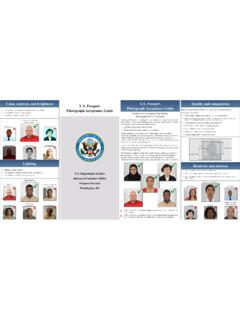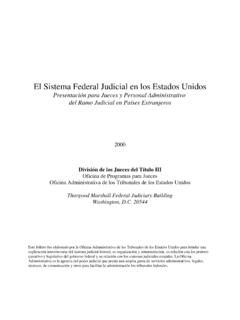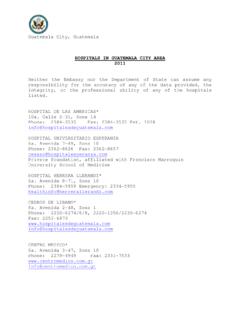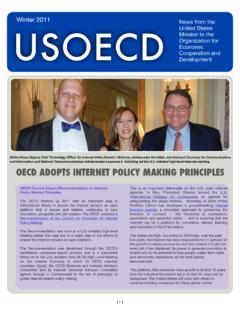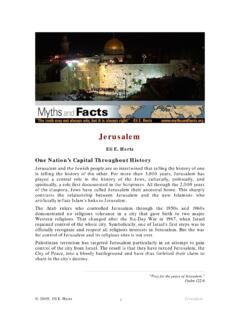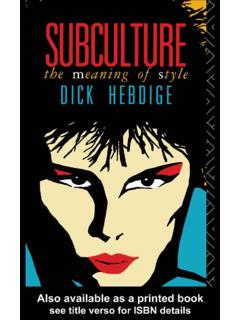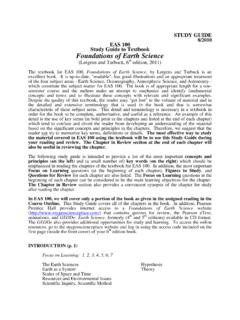Transcription of American Popular Music - State
1 AmericanAmericanAmericanAmericanAmerican AmericanAmericanAmericanAmericanAmerican AmericanAmericanAmericanAmericanAmerican AmericanAmericanAmericanAmericanAmerican AmericanAmericanAmericanAmericanAmerican AmericanAmericanAmericanAmericanAmerican AmericanAmericanAmericanAmericanAmerican AmericanAmericanAmericanAmericanAmerican AmericanAmericanAmericanAmericanAmerican AmericanAmericanAmericanAmericanAmerican AmericanAmericanAmericanAmericanAmerican AmericanAmericanAmericanAmericanAmerican AmericanAmericanAmericanAmericanAmerican AmericanAmericanAmericanAmericanAmerican AmericanAmericanAmericanAmericanAmerican AmericanAmericanAmericanAmericanAmerican AmericanAmericanAmericanAmericanAmerican AmericanAmericanAmericanAmericanAmerican AmericanAmericanAmericanAmericanPopularP opularPopularPopularAmericanAmericanAmer icanAmericanAmericanAmericanAmericanAmer icanAmericanAmericanAmericanAmericanAmer icanAmericanAmericanAmericanAmericanAmer icanAmericanAmericanAmericanAmericanAmer icanAmericanAmericanAmericanAmericanAmer icanAmericanAmericanAmericanAmericanAmer icanPopularPopularPopularPopularPopularP opularPopularPopularPopularPopularPopula rPopularPopularPopularPopularPopularPopu larPopularPopularPopularPopularPopularPo pularPopularPopularPopularPopularPopular PopularPopularPopularPopularAmericanPopu larPopularPopularAmericanPopularAmerican PopularAmericanPopularAmericanPopularPop ularPopularAmericanPopularAmericanPopula rAmericanPopularPopularPopularPopularPop ularPopularPopularPopularPopularPopularP opularPopularPopularPopularPopularPopula rPopularPopularPopularPopularPopularPopu larPopularPopularPopularPopularPopularPo pularPopularPopularPopularPopularPopular PopularPopularPopularPopularPopularPopul arPopularPopularPopularPopularPopularPop ularPopularPopularPopularPopularAmerican PopularAmericanPopularAmericanPopularPop ularPopularAmericanPopularAmericanAmeric anAmericanPopularAmericanAmericanAmerica nPopularAmericanPopularAmericanPopularAm ericanPopularPopularPopularAmericanPopul arAmericanPopularAmericanPopularAmerican AmericanAmericanPopularAmericanAmericanA mericanAmericanAmericanAmericanPopularAm ericanAmericanAmericanPopularAmericanPop ularAmericanPopularAmericanPopularPopula rPopularAmericanPopularAmericanPopularAm ericanPopularAmericanPopularAmericanPopu larMusicMusicMusicMusicMusicMusicPopular PopularMusicPopularMusicMusicPopularMusi cPopularPopularPopularPopularPopularPopu larPopularPopularPopularMusicPopularMusi cPopularMusicPopularMusicMusicPopularMus icPopularMusicPopularMusicMusicLarry Starr & Christopher WatermanCopyright 2003, 2007 by Oxford University Press, condensation of American Popular Music : FROM MINSTRELSY TO MP3 is a condensation of the book originally published in English in 2006 and is offered in this condensation by arrangement with Oxford University Press, Starr is Professor of Music at the University of Washington.
2 His previous publications include The Dickinson Songs of Aaron Copland (2002), A Union of Diversities: Style in the Music of Charles Ives (1992), and articles in American Music , Perspectives of New Music , Musical Quarterly, and Journal of Popular Music Studies. Christopher Waterman is Dean of the School of Arts and Architecture at the University of California, Los Angeles. His previous publications include J j : A Social History and Ethnography of an African Popular Music (1990) and articles in Ethnomusicology and Music Educator s from top: Bob Dylan and Joan Baez on the road; Diana Ross sings to thousands; Louis Armstrong and his trumpet; DJ Jazzy Jeff spins records; NSync in concert; Elvis Presley sings and acts. AmericanAmericanAmericanAmericanAmerican AmericanAmericanAmericanAmericanAmerican Popu larPopu larMusicLarry Starr & Christopher Waterman Introduction .. 3 Chapter 1: Streams of Tradition: The Sources of Popular Music .
3 6 Chapter 2: Popular Music : Nineteenth and Early Twentieth Centuries .. 1 2 An Early Pop Songwriter: Stephen Foster .. 1 9 Chapter 3: Popular Jazz and Swing: America s Original Art Form .. 2 0 Chapter 4: Tin Pan Alley: Creating Musical Standards .. 2 6 Chapter 5: Early Music of the American South: Race Records and Hillbilly Music .. 3 0 Chapter 6: Rhythm & Blues: From Jump Blues to Doo-Wop .. 3 4 Big Mama Thornton .. 3 9 James Brown and Aretha Franklin .. 4 0 Jazz Gallery .. 4 4 Chapter 7: Country Music : Songs of Tradition and Change .. 5 6 Hank Williams .. 6 1 Chapter 8: Rock n roll : A Generation s Identity .. 6 2 Bob Dylan .. 7 0 Chapter 9: Music : The Business .. 7 2 Bill Haley and Rock Around the Clock .. 6 5 Chapter 10: M u s i c Technology: Innovations and Controversies .. 7 6 The Electric Guitar.
4 8 0 Chapter 11: Hip-Hop: The Rapper s Delight .. 8 2 Prince .. 8 8 The Message .. 8 9 Chapter 12: World Music Collaborations: Crossing Cultural Boundaries .. 9 0 Glossary .. 9 4 CONTENTS3 IntroductionPopular Music , like so much of American culture, reflects a kaleidoscope of contribu-tions, a cross-fertilization of styles, and a blending of dreams. It could hardly be otherwise in this nation of immigrants. Arguably the United States is a perfect musical laborato-ry: take people from every corner of the globe, give them freedom to cre-ate. Distribute their effort: by sheet Music , phonograph, radio or, for the younger reader: by Blu-ray Disc, mp3, Internet what results! European ballads recast with African poly-rhythmic textures or blended with a Cuban-flavored habanera (bold-faced terms are defined in the glos-sary) or a more refined rumba.
5 Cold bop. Hot jazz. Acid rock. Gangsta rap. We might speak less of a singular American Popular mu-sic than of a constellation of mutu-ally-enriching American Popular musics. Elvis Presley borrows from African- American blues, and black Motown stars recast white pop. Ask Khmer- American rapper Prach Ly, also known as praCh, about American Popular Music and he ll speak of growing up with Snoop Dog, Dr. Dre, Run DMC, and Public Enemy on the radio and of cutting his first album in his parents garage. Lacking a mixing board, Prach used a karaoke machine and sampled old Khmer Rouge propaganda speeches for his powerful musical condemna-tion of the Cambodian hope the pages that follow convey a sense of creative ferment, of artistic drive, and of how Ameri-cans, borrowing from diverse musi-cal traditions, have made their own original contributions to humanity s truly universal language.
6 The reader will encounter here crooners and rappers, folkies and rockers, the King, a Prince, and the Queen of Soul. Explained here is the latest in musical technology, from the solid-body electric guitar to the lossless compression digital file. And read-ers will learn about the people who make the Music , truly American in their stunning diversity. Theirs are perhaps the most wonderful stories of gather around the great Louis Armstrong, seated at the piano. Armstrong grew up in New Orleans in the early part of the 20th century and gave the world a lasting legacy jazz. 4 Consider the African- American child, born in 1901 and living in a poor New Orleans neighborhood. At the age of seven, with his mother and sister in poverty, he found work with a family of junk dealers Rus-sian Jewish immigrants nearly as poor as his own family.
7 They were always warm and kind to me, he later would write indeed, as one scholar later put it, they virtually adopted him. The boy would ride the junk wagon and blow a small tin horn to attract potential he later wrote:One day when I was on the wagon with Morris Karnovsky .. we passed a pawn shop which had in its window an old tarnished beat up B Flat cornet. It cost only $5. Morris advanced me $2 on my salary. Then I put aside 50 cents each week from my small pay finally the cornet was paid in full. Boy, was I a happy boy s name was Louis Arm-strong. He would give the world Popular Music is the sound of countless Louis Arm-strongs sharing the Music in their souls. It spans a matchless range of human experience, from matters of the heart Sinatra bemoaning a lost love in the wee small hours of the morning to the political protest of Country Joe and the Fish performing the I Feel Like I m Fixin to Die Rag.
8 Some tunes propel Louis Armstrong in a 1931 photo5couples to the dance floor, there to twist or jitterbug, hustle or tango. Songwriters depict their muses so vividly we can almost believe them real: the Beach Boys Caroline per-haps, Chuck Berry s Maybellene, Bob Dylan s Absolutely Sweet Ma-rie, or Rickie Lee Jones s Chuck E. And sometimes what resonates is not the girl in the song, but the one with whom you first heard it, a long time ago. Without Music , life would be a mistake, the German philosopher Friedrich Nietzsche wrote. Here you will meet many visionaries who would agree. Michael Jay FriedmanClockwise from upper left: A couple whirls across the dance floor of Harlem s Savoy Ballroom, 1953; Dancers Twist at New York s Peppermint Lounge, 1961; Crooner Frank Sinatra, 1943; Singer-songwriter Rickie Lee Jones, 1999; Country Joe McDonald in the late h a pT E r 1 The European- American StreamUntil the middle of the Until the middle of the U19th century, American Popular Music was almost Upopular Music was almost Uentirely European in character.
9 The cultural and linguistic dominance of the English meant that their Music established early on a kind of main-stream around which other styles the time of the American Revolution, professional composers of Popular songs in England drew heavily upon ballads. Originally an oral tradition, ballads were circu-lated on large sheets of paper called broadsides. While some broadside ballads were drawn from folk tra-dition, many were urban in origin and concerned with current events. In most cases only the words were provided, with an indication of a tra-ditional melody to which they were to be sung. Balladmongers hawking the broadsides sang them on the streets. Composers of broadside ballads often added a catchy chorus, a repeated melody with fixed text inserted between pleasure garden was the most important source of public enter-tainment in England between 1650 and 1850.
10 Large urban parks filled with tree-lined paths, the pleasure gardens provided an idyllic rural experience for an expanding urban audience. The pleasure gardens be-came one of the main venues for the dissemination of printed songs by professional composers. In the 1760s the first American pleasure gardens opened in Charleston, New York, and other English ballad opera tradi-tion was also Popular in America during the early 19th century. Per-haps the best known is John Gay s The Beggar s Opera (1728). The main characters in ballad operas were common people, rather than the kings and queens of imported op-eras; the songs were familiar in form and content; and the lyrics were all in English rather than English folk ballad tradition thrived in America. In the early 20th century folklorists were able to record dozens of versions of old English ballads in the United States.
